Just Smile

- Forcing yourself to smile can boost your mood: Psychologists have found that even if you’re in bad mood, you can instantly lift your spirits by forcing yourself to smile.
- It boosts your immune system: Smiling really can improve your physical health, too. Your body is more relaxed when you smile, which contributes to good health and a stronger immune system.
- Smiles are contagious: It’s not just a saying: smiling really is contagious, scientists say. In a study conducted in Sweden, people had difficulty frowning when they looked at other subjects who were smiling, and their muscles twitched into smiles all on their own.
- Smiles Relieve Stress: Your body immediately releases endorphins when you smile, even when you force it. This sudden change in mood will help you feel better and release stress.
- It’s easier to smile than to frown: Scientists have discovered that your body has to work harder and use more muscles to frown than it does to smile.
- It’s a universal sign of happiness: While hand shakes, hugs, and bows all have varying meanings across cultures, smiling is known around the world and in all cultures as a sign of happiness and acceptance.
- We still smile at work: While we smile less at work than we do at home, 30% of subjects in a research study smiled five to 20 times a day, and 28% smiled over 20 times per day at the office.
- Smiles use from 5 to 53 facial muscles: Just smiling can require your body to use up to 53 muscles, but some smiles only use 5 muscle movements.
- Babies are born with the ability to smile: Babies learn a lot of behaviors and sounds from watching the people around them, but scientists believe that all babies are born with the ability, since even blind babies smile.
- Smiling helps you get promoted: Smiles make a person seem more attractive, sociable and confident, and people who smile more are more likely to get a promotion.
- Smiles are the most easily recognizable facial expression: People can recognize smiles from up to 300 feet away, making it the most easily recognizable facial expression.
- Women smile more than men: Generally, women smile more than men, but when they participate in similar work or social roles, they smile the same amount. This finding leads scientists to believe that gender roles are quite flexible. Boy babies, though, do smile less than girl babies, who also make more eye contact.
- Smiles are more attractive than makeup: A research study conducted by Orbit Complete discovered that 69% of people find women more attractive when they smile than when they are wearing makeup.
- There are 19 different types of smiles: UC-San Francisco researcher identified 19 types of smiles and put them into two categories: polite “social” smiles which engage fewer muscles, and sincere “felt” smiles that use more muscles on both sides of the face.
- Babies start smiling as newborns: Most doctors believe that real smiles occur when babies are awake at the age of four-to-six weeks, but babies start smiling in their sleep as soon as they’re born.
Engaging with aging
Photographer Isa Leshko, created a touching and intimate glimpse into the lives of elderly animals. Below is a small sample of her gallery of moving black and white photographs. From her artist statement:
In order to achieve a sense of intimacy in these portraits, I spend several hours with the animals I photograph and I try to visit them multiple times. Depending on the animal, I may spend an hour or so simply lying on the ground next to the creature before I take a single image. This approach helps the animal acclimate to my presence and to my equipment and it allows me to observe the animal without being focused on picture taking.
I am creating these photographs to gain a deeper understanding about what it means to be mortal and to exorcise my fears of aging. I have come to realize that these images are self-portraits, or at the very least, they are manifestations of my fears and hopes about what I will be like when I am old. My intention is to take an honest and unflinching look at old age and I want these images to inspire others to become aware of and to engage with their own attitudes toward aging and mortality.

Handsome One, Thoroughbred Horse, Age 33
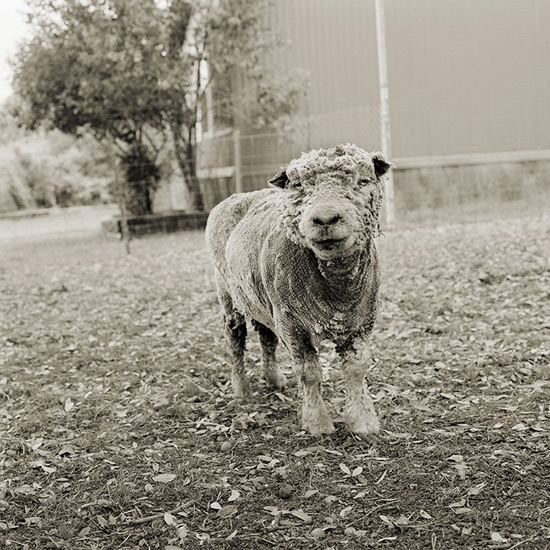
Phyllis, Southdown Sheep, Age 13
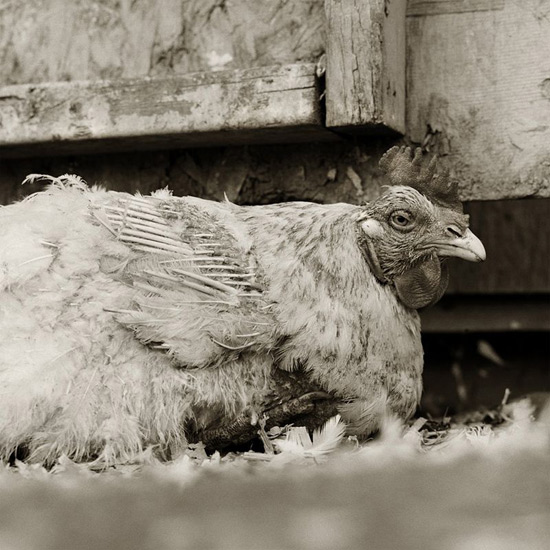
Rooster, Age unknown

Kiri, Great Plains Wolf, Age 17
…make sure to read all of her artist statement – the backstory and a short documentary makes the series even more engaging.
To see more images from this series or to purchase prints, please visit: http://isaleshko.com/elderly-animals
Typehunt
Combining two favorites – shopping and photography – I worked with Christina South to search for typography from A to Z around Bridge Street Town Centre in Huntsville.



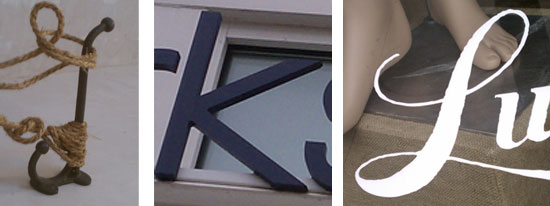


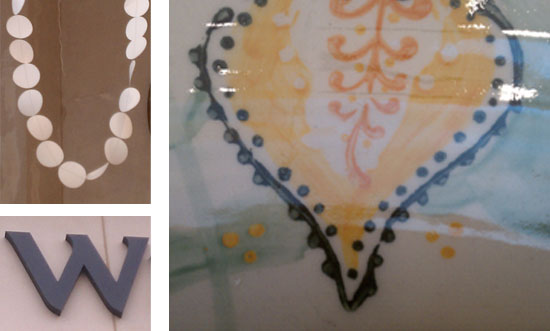

Pen to paper

There are three items I’d hate to lose – my computer, my cell phone and my notebook. Losing the first two would be an extreme inconvenience, but the data on both are backed up and could be replaced. The material in my notebook goes back about a year and much of it would be impossible for me to replicate.
In a multitude of colors scribbled from front to back, back to front and from the middle to both the front and back are inspirations, snippets of information and crazy ideas. Since my notes are fragmented I started using a type of Moleskine meta data system to answer the problem of following my fragmented flow of ideas. I use two directional indicators (← means continued from, while → means continued on) next to a referenced page number. I simply number the right hand page, no need to number both sides. For example, ←24 would indicate from page 24 and → 36 would mean the material was continued on page 36.
Now, when I record ideas and bump up against other material I can make a note of where in the book the information is coming from or where I continued it to. It’s like a hyperlink system on paper.
I scribble…
- Info – raw info along with ideas and aspirations.
- Mind-maps – nothing beats pen and paper for exploring ideas and linking them together.
- Recording ideas – explorations, ideas and inspirations are precious, so it’s important to record every idea you have before it’s forgotten.
- Journal – recording your musings can help make sense of work and life.
For inspiration check out this exceptional collection of Moleskine artwork and a Flickr group with about 4,000 members and 36,000 images.
Whether you use a notebook as a creative outlet or an organization tool or both, here are several pages of Moleskine notebooks.
Making sentences sing
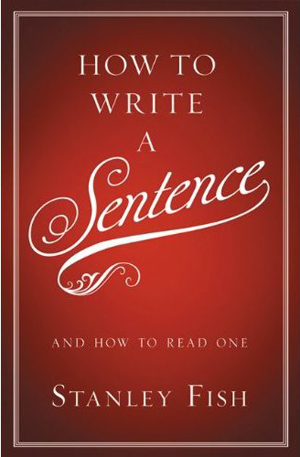
Literary critic, legal scholar, and New York Times online columnist Stanley Fish’s just released a guided tour through some of the most beautiful, arresting sentences in the English language. How to Write a Sentence: And How to Read One
His favorite five sentences:
- John Bunyan (from The Pilgrim’s Progress, 1678): “Now he had not run far from his own door, but his wife and children perceiving it, began crying after him to return, but the man put his fingers in his ears, and ran on, crying, Life! Life! eternal life.”
- Jonathan Swift (from A Tale of a Tub, 1704): “Last week I saw a woman flayed, and you will hardly believe how much it altered her appearance for the worse.”
- Walter Pater (from The Renaissance, 1873): “To such a tremulous wisp constantly re-forming itself on the stream, to a single sharp impression, with a sense in it, a relic more or less fleeting, of such moments gone by, what is real in our lives fines itself down.”
- Ford Madox Ford (from The Good Soldier, 1915): “And I shall go on talking in a low voice while the sea sounds in the distance and overhead the great black flood of wind polishes the bright stars.”
- Gertrude Stein (from Lectures in America, 1935): “When I first began writing I felt that writing should go on I still do feel that it should go on but when I first began writing I was completely possessed by the necessity that writing should go on and if writing should go on what had commas and semi-colons to do with it what had commas to do with it what had periods to do with it what had small letters and capitals to do with writing going on which was at the time the most profound need I had in connection with writing.”
The power of small
Often many business do all they can to make themselves appear like a big business. They think that their company would be more successful if it were bigger.
But bigger may not be better. New ways of communicating have changed how businesses connect with clients and customers. These methods allow smaller firms to be agile, fast, and responsive. They can leverage technology to outmaneuver and occupy market space in which they otherwise might not be able to compete.
This approach is outlined in a book I just finished, Speak Human: Outmarket the Big Guys by Getting Personal
From a customers perspective there are advantages to dealing with a smaller enterprise. Better service,
Here are a couple of worthy quotes.
“As businesses get larger, it’s easier to hide bad people in them. This is because there are so many things going on, alongside numerous coworkers who can shield one’s dismal performance. Toss in some memos, meetings, office politics, and it gets harder to determine whether a staff member is kicking ass or just great at kissing it.
“In a company of one, there’s little room for any of this. When you’re that tiny, you have little choice but to be exemplary.”
You can currently read much of the book’s content on the Speak Human website.






